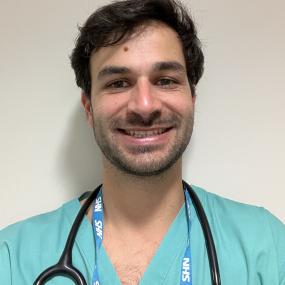Collaborative Autonomy in Organ Donation Project Work

Chris Timmis is an anaesthetic and ICM ST6 in the Peninsula Deanery who is one of the trainee representatives for organ donation for the South West. He has been involved in supporting the development of DCD theatre pathway.
It has been a real pleasure to be a trainee representative for organ donation and be involved in projects at University Hospital Plymouth and the Royal Devon and Exeter. It has been fascinating to be involved in the same project twice in two different locations. To see the common themes but also the differences in implementing change. Learning valuable lessons from the first project to save time during the second. Introducing counterparts in two separate hospitals so they can discuss directly and learn from each other. The project I have been involved in is withdrawal of life sustaining treatment (WLST) in the anaesthetic room for patients undergoing organ donation post diagnosis of death using circulatory criteria (lets hope I never have to try to fit that title on a poster). If I only had one take home message, it would be the power of the multi-disciplinary team (MDT) and the concept of collaborative autonomy.
I thought I had invented the term collaborative autonomy, but a quick literature search (aka Google) showed that the US military had unexpectantly beaten me to it using this concept for drone warfare. Equally there were other hits with people describing team dynamics. So, what does the process of collaborative autonomy look like for us?
-
Identifying key members of the MDT and meeting early before any guidelines produced.
-
At this meeting describing an aim and the inspirations for this.
-
Having an enthused group with a shared aim.
-
The MDT working autonomously within their own department to make the process excellent.
-
Monthly meetings to check in with each other and collaborate. Set goals to achieve prior to next meeting.
We found this an effective process at allowing people to lead designing systems within their own department. It was recognising that they ultimately knew their department better than anyone else and would be able to implement that into a process. Understanding the past was key for planning future successes. Seeking inspiration from other regions or hospitals was often the catalyst for change. The sharing of guidelines and role cards that the MDT could then make specific to their hospital was great for achieving buy in. These role cards could then be used in simulation with people new to the concept to check they worked. It is always surprising how long it takes to push a bed from the intensive care unit to the operating theatre, even if they are closely located. Now imagine doing that with a deceased patient post WLST who wants to be an organ donor knowing that every minute matters but trying at all times to maintain dignity. On one such occasion the team were stopped by a doctor in the corridor who with good intentions started to assess the patient as they looked unwell. Ischaemic times really do matter. It reminds me of the phrase “not everyone wants to be an organ donor but no one wants to be a poor organ donor.”
In Plymouth hospital there was a vast MDT involved. This included, ICU nurses and doctors, SNODs, medical technology support, theatres, palliative care, pharmacy and other hospitals both in and out of region. This led to the production of role cards which could be used by each member of the MDT during a donation. Following appropriate discussions with family, the patient would be established on end of life morphine and midazolam infusions given via a pre-programmed pump that could also administer a fixed bolus if needed for comfort. This pump underwent a two-person check. Having liaised with theatres the patient would be transferred to the anaesthetic room via an agreed route that maximised patient and family dignity. The bedside nurse would accompany the patient along with the transfer trolley specifically designed by the nursing staff for this pathway. As well as all the expected medical equipment it also had bluetooth speaker, refreshments, dimmable lights and keepsakes. The anaesthetic room would already have been emptied of excess equipment and white sheets placed over medical equipment. The end of life symbol would be placed on the door to the anaesthetic room and a member of theatre staff was allocated to being in the corridor to reduce disturbance and also to escort family in and out. The patient monitor was displayed sensitively in the anaesthetic room with alarms silenced and also displayed in theatre via a separate monitor. This reduced the need of passing observation data through the door and maintained the environment for patient and family. Planned WLST would then occur with a doctor present or immediately available to confirm death if needed. Prefilled comfort medications were immediately available. If the patient had a prolonged time to asystole then they would be transferred back to ICU with the same emphasis on patient dignity. This is just an example of one pathway, each hospital will have shared features but equally unique aspects. The current challenge is to evaluate the pathway. We can demonstrate donation rates, have informal feedback from staff involved but understanding the families experience is vital. What do you ask a family that is grieving and is unlikely to have a reference point to WLST done in a different manner? This is what we need to solve to ensure excellent end of life holistic care. What we say and do in those moments are likely to be remember by the family forever.
In future projects I will definitely think more about collaborative autonomy. When everyone is included from the beginning and given autonomy for designing the process within their own department great things can happen. I believe this method could be applied to most projects within healthcare improving both buy in and sustainability.
